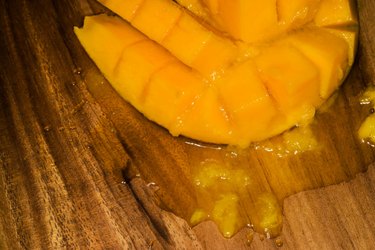
Like most plants and trees native to the tropics, the mango tree (Mangifera indica L.) is extremely sensitive to its environment, especially when in comes to Old Man Winter. Cold temperatures can minimize the vitality of the tree as can planting the mango in an area that does not provide proper hydration.
Hardiness
Video of the Day
A mango tree may not grow properly if it has been subjected to winter freezing damage. In the U.S., the mango tree will typically only survive outdoors in USDA Hardiness Zone 10, which includes Hawaii, South Florida, the far southern tip of Texas and a small portion of southern California. The mango originated in India and Burma and thrives only in tropical or subtropical locales.
Video of the Day
Temperature Limits
A tree that is exposed to a temperature of 40 degrees Fahrenheit, even for only a few hours, will see its flowers and fruit damaged and potentially killed. A drop to 30 degrees Fahrenheit can result in serious injury or fatality to young trees. Additionally, a thermometer that falls to 25 degrees Fahrenheit for a few hours can result in significant injury to the leaves and small branches of even a mature tree, although well-established, healthy trees can usually survive a temperature of this severity.
Rainfall
Rainfall and the timing of that rainfall are vital to the health of a mango tree. It enjoys the receipt of between 30 and 100 inches of rain annually; however, the timing of this hydration is actually more important than the amount. The majority of the rain should be received during the summer months of June through September, followed by a relatively dry period for the following eight months. Still, while that pattern does not always hold true for Florida, the mango still manages to grow well there.
Environment
If a mango tree is not growing, nutrition could be a problem. Young trees should be fertilized once monthly during their first year of life, advises the University of Florida Institute of Food and Agricultural Sciences. That application can be reduced to 3 to 4 times annually for more mature trees. Newly planted trees should be watered every other day for the first week, then once or twice weekly for the following few months. After reaching an age of four years, mango trees should be hydrated only during the dry season and periods of excessive drought.